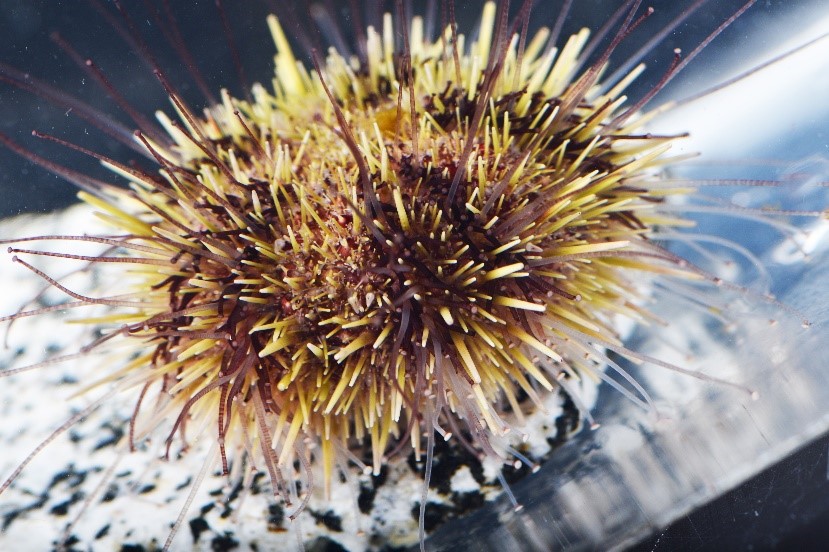 Climate change will affect everything, even the smallest creatures.
Climate change will affect everything, even the smallest creatures.
Austin Garner, assistant professor in the department of biology at Syracuse University, discusses one.
Austin M. Garner is an Assistant Professor in the Department of Biology and BioInspired Institute at Syracuse University. His research focuses on how animals interface with their environment with a particular focus on how animals attach to surfaces in variable conditions. He employs an interdisciplinary research approach that combines expertise in both life and physical sciences. Garner’s research currently focuses on the attachment systems of lizards (geckos and anoles) and sea urchins. Prior to joining Syracuse University, Garner was a Postdoctoral Teaching Fellow at Villanova University from 2021-2022. Garner earned a Ph.D. in Integrated Bioscience in 2021 and a B.S. in Biology (magna cum laude) in 2016, both from the University of Akron.
Sea Urchins Can’t “Get a Grip” on Climate Change
In addition to chronic stressors like ocean warming and acidification, global climate change is projected to increase the intensity and frequency of short-term, extreme climatic events, such as storm systems producing torrential rain. Large amounts of precipitation near the coastline can have drastic impacts on nearshore marine ecosystems as freshwater runoff enters the ocean, mixes with seawater, and causes temporary, but sometimes severe, reductions in the salt concentration, or salinity, of seawater. Some marine organisms can actively adapt their bodies to these changing salinity conditions, but others lack this ability or are ineffective at it.
Sea urchins are ecologically and economically important herbivores in many nearshore ecosystems and they are particularly intolerant of changes in salinity. Sea urchins rely on elongate, fleshy tube-like structures, called tube feet, for many of their life-sustaining functions, including attachment to and movement on surfaces in the dynamic, wave-battered habitats that are prominent along shorelines. This begs the question: are sea urchin tube feet and their function impacted by low salinity events?
Numerous tube feet functions are negatively affected by low salinity, but which functions are impacted depends on the salinity level. Sea urchins first lose their ability to flip themselves over with relatively small reductions in salinity, but at moderately low salinity levels they are unable to use their tube feet to move along surfaces. At severely low salinity, sea urchins lose their ability to attach to surfaces completely. Clearly, the impact of low salinity events on these important herbivores will depend on the magnitude of the salinity change with impacts ranging from problems relocating themselves to better environmental conditions to finding themselves susceptible to dislodgement from waves and predators.


Read More:
Garner Organismal Attachment Lab (https://agarner.expressions.syr.edu/)
Journal of Experimental Biology article (https://doi.org/10.1242/jeb.245750)
